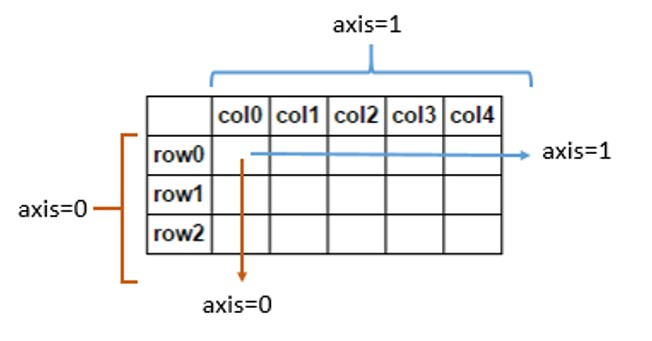Basic Dimension Concepts
In PyTorch, NumPy, and pandas, dimensions (also called axes) follow a consistent ordering:
- First dimension (dim=0 or axis=0): Represents rows
- Second dimension (dim=1 or axis=1): Represents columns
 Image credit: Stack overflow post
Image credit: Stack overflow post
Visual Representation
For a matrix:
[1 2 3] → dim=1/axis=1 operates along this direction (within each row)
[4 5 6] ↓ dim=0/axis=0 operates along this direction (down columns)
[7 8 9]
Library Comparison
The same operation across different libraries on a 2x3 array:
import torch
import numpy as np
import pandas as pd
import tensorflow as tf
# PyTorch (uses 'dim')
torch_tensor = torch.tensor([[1, 2, 3],
[4, 5, 6]])
torch.sum(torch_tensor, dim=1) # Sum along rows
# tensor([ 6, 15]) #
# NumPy (uses 'axis')
np_array = np.array([[1, 2, 3],
[4, 5, 6]])
np.sum(np_array, axis=1) # Sum along rows
# array([ 6, 15])
# Pandas (uses 'axis')
df = pd.DataFrame([[1, 2, 3],
[4, 5, 6]])
df.sum(axis=1) # Sum along rows
# 0 6
# 1 15
# dtype: int64
# TensorFlow (uses 'axis')
tf_tensor = tf.constant([[1, 2, 3],
[4, 5, 6]])
tf.reduce_sum(tf_tensor, axis=1) # Sum along rowsImportant Notes
-
The negative indexing (-1) refers to the last dimension:
dim=-1is equivalent todim=1for a 2D matrix- This is commonly used in PyTorch as it works regardless of tensor dimensionality
-
In attention mechanisms:
- We typically use
dim=-1for softmax to operate row-wise - This ensures each token’s attention weights sum to 1.0
- Example:
torch.softmax(attention_scores, dim=-1)
- We typically use